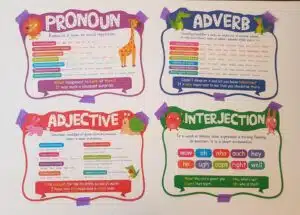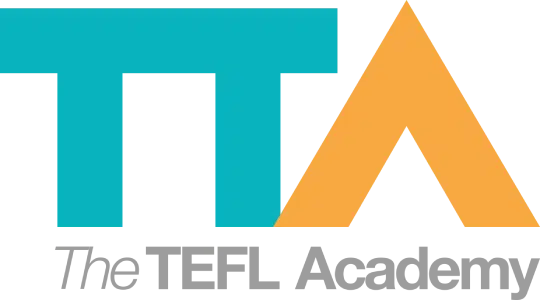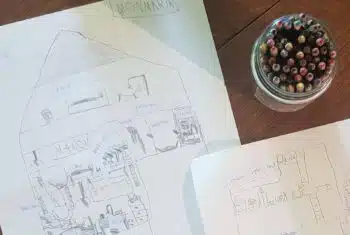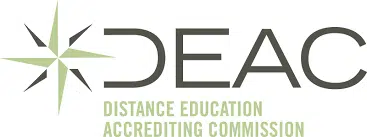Private ESL Lessons: How To Build Up English Teaching Resources
Join a global community of over 200,000 TEFL teachers working throughout the world! Enrol me!
Teaching private ESL lessons can be both exciting and rewarding, but it often comes with one big challenge: building up the right English teaching resources.
Unlike teaching in a school or language centre where materials are usually provided, private TEFL teachers need to create, collect, and adapt their own teaching tools to suit each learner’s needs.
From lesson planning and worksheets to authentic materials and online tools, having a strong resource bank makes lessons more engaging, professional, and effective. But how can we do that without spending our down-time screenshotting useful websites?
We asked TTA alum Rebekah to help us out. Rebekah is South African but lives in a quaint, little village in France. She teaches private English lessons to ESL learners in her village and beyond.

Rebekah, what can you tell us?
Why you need strong resources for private ESL lessons
Teaching in a school – whether you are teaching in a language school or you are the ESL teacher in a regular school – comes with certain advantages.
- Students? Check.
- Classroom + resources? Check.
- Colleagues? Check.
- Recommended coursebook? Probably.
And don’t forget the printer!
While one teaching trajectory is not easier than another, teaching private ESL classes comes with its own unique set of challenges. How do you find students? Where do you teach the lessons? And what materials should you use?
And while all these questions are valid for private TEFL teachers, it’s the last one which is really important for your students. Having your own set of resources for your private ESL lessons when you don’t have access to a coursebook si essential for a numbr of reasons. It’s how you can:
- personalise your lessons to suit your learners’ interests and needs,
- match your materials to the proficiency level of your students (who will all vary), and
- create motivating and engaging lessons for your students.
So let’s get down to the nitty-gritty.
Start with the basics: A location
If you are giving in-person (versus online) private lessons, you’ll need to set aside a learning/teaching space. If you are teaching small groups as well as one-on-one classes, you’ll want to make sure that you have enough space (and chairs etc.) to accommodate your students.

In addition to a comfortable space, I’ve found it useful to have the following in my ‘classroom’:
- At least one dictionary that students can use.
- A supply of pens, pencil crayons (particularly if you are teaching children), and paper.
- A printer – for printing out worksheets and flashcards.
Essential teaching materials: Visual aids
Visual aids aren’t so important if you are teaching intermediate or advanced students, but if you are teaching Beginners, they’re essential!
You know what they say, a picture speaks a thousand words. Visual aids might not be essential all the time but they sure are useful – even for older or more advanced learners.
Posters
If you have a dedicated space in your home that you use as a classroom, putting up posters – showing, for example, different parts of speech – can be useful. You can find a selection of posters for sale on sites such as Amazon or Etsy, or create and print your own using free templates on Canva.

Flashcards
Flashcards are an absolute must-have if you are teaching children. They provide an easy and convenient way to teach vocabulary and can be used in a variety of games.
You can buy sets of flashcards online, but there are also plenty of free downloadables available. Just type ‘free English flashcards’ into the search bar, download, and print!
We do love a freebie!
Realia
One of the advantages of teaching from home is that you always have realia on hand. Want to teach vocabulary around groceries? Just pop into the kitchen and grab a few goodies. Doing clothes? Well, hello wardrobe!
FYI: Realia are everyday objects and materials used as teaching aids.
The fun element: Games
I’ve found that when teaching kids or Beginners, games have an essential role to play in the ESL classroom. Of course, there are many games that you can play without any materials – for example, ‘20 Questions’, ‘Simon Says’ or ‘I Spy’ – but, if you are teaching kids, there are a few games/game-related items that I have found to be worth investing in.
Memory game
You know the drill: pairs of matching images that get placed at random on the table, image-side down. You take turns to turn over the cards and find the matching pairs. The ESL version of this game? Every time you turn over a card, you practice the vocabulary related to the image.
Your local charity shop is bound to have a few versions of this game in stock. Otherwise, you can make your own by printing out a double set of flashcards.
An hourglass / timer
A timer is a really useful tool to have in the classroom. Buy yourself a set of timers (you can get a set of small timers of different durations) or borrow the timer from one of the board games you have at home.
Now that you have a timer, there are so many games you can play!
For example:
- DIY pictionary: Write out words that are relevant to your students on small cards. Split the class in two and get someone from each team to draw the word on the card. The team that guesses correctly first (before the time is up) wins a point.
- Charades: The same idea as above except that this time the teams alternate turns and someone from the team tries to act out the word on the card. If the team guesses the word before the time runs out, the team scores a point.
- DIY 30 seconds: Create a set of playing cards by writing five words on each card. Divide the class up into teams (you’ll need at least two teams of two students). One person from one of the teams tries to describe as many of the words on the card as possible in the allotted 30 seconds, without mentioning any of the words on the actual card. For every word the team guesses, they score a point.
AGO cards

I’m sure there are many other ESL games that you can buy online, but I’ve found the AGO cards great for when my students are kids or Beginners. Added bonus: you can play this game with your student when you have a one-on-one class.
How does it work? In many ways, it’s similar to Uno. There are two types of cards in the pack – the regular playing cards (which have a colour, a number, and an English question) and the special action cards (change the colour, change direction, pick up two cards etc).
Each player begins with a certain number of cards, and, on their turn, has to put down a card that matches either the colour or number of the card before. The twist? When you put down a card, you have to read out and answer an English question too. The player who finishes all their cards first wins.
The collection of cards that I bought comes with three different packs of cards targeting different levels. The English questions / sentence structure becomes more complex in the higher levels.
Use authentic materials for real-life learning
Authentic materials are resources that your students might encounter out there in the real world – newspaper articles, travel brochures, restaurant menus, theatre guides, bus timetables.
If you live in an English-speaking country, you’ll have no problem getting your hands on a bunch of these. If, like me, you live in a country where English is a foreign language, things are a little more complicated. Thankfully, there’s the internet.
- Newspaper/ magazine articles – most reputable newspapers have an online version.
- Travel brochures – check out the websites of travel agencies that operate in English-speaking countries.
- Theatre/ movie guides – look up famous theatres in the UK or the USA and visit their websites.
Read more: Authentic Materials: How To Find Them And How To Use Them
Pro-level TEFL teacher hack: Keep a collection of authentic materials from whener you visit English-speaking countries to use on your teacher-travels.
Leverage digital tools and online platforms
You can add variety to your lessons by including short videos, podcasts, radio interviews or songs. Not only will this make your lesson more interesting, it will also give your students the opportunity to practice different skills.
That being said, the material needs to be pitched at the right level and you don’t want to spend hours and hours trying to find the right clip.
Videos for kids
If you are teaching kids, a great resource is the British Council website where you can access songs, stories (audio recordings) and videos aimed at teaching kids English.
Quick videos
English Central has short video clips categorised by level (Beginner, Intermediate, Advanced) and area of interest (business, media, travel, kids).
Educational videos
For slightly longer videos – around five minutes each – TED-Ed is a fantastic resource! These videos make for a great starting point for a lesson with more advanced students. What’s more: each video on the website comes with additional educational material that you might find useful.
The advantage of private lessons – whether you are teaching small groups or individuals – is that you have the liberty to personalise the lesson. So, once you get to know your students, you can find videos or podcasts on topics that interest them!
Don’t forget that if you plan on showing a video or listening to a podcast or song during class, you’ll need to have a laptop or ipad set up and a reliable internet connection.
Ready-made resources: Lesson plans, worksheets and activities
While it’s super to come up with your own lesson plans and worksheets, there’s no reason why you can’t also use some of the materials that are already out there. If you’re new to teaching, using existing resources can help boost your confidence (just make sure you choose good ones) and can save you valuable time.
Read more: Top Tips For Effective Lesson Planning
Paid resources
You’ll find both paid and free resources if you search for ESL lesson plans online. Websites such as ESL Brains, linguahouse, and Onestopenglish offer subscription models that allow you to access lesson plans, worksheets, flashcards and audio/video material for a set monthly or yearly fee.
Free resources
If you don’t want to spend any money, you can also find plenty of free lesson plans and worksheets on the British Council Teaching English website, the BBC Learning English website, and on UsingEnglish.com.
Building confidence with your English teaching resources collection
Building up a set of resources can take a little work and effort. However once you have a collection of worksheets, authentic materials, flashcards, games, videos and recordings, planning lessons becomes so much easier! So, go get started… you won’t regret it!
Rebekah’s right. Building up resources for private lessons doesn’t need to feel overwhelming. Start small with a few key materials, add in authentic and digital tools, and keep refining your collection as you go. Over time, you’ll develop a flexible, well-organised resource bank that saves you time, boosts your confidence, and makes your lessons more engaging for your students.
Accreditation & Quality Assurance
The TEFL Academy was the world’s first TEFL course provider to receive official recognition from government regulated awarding bodies in both the USA and UK. This means when you graduate you’ll hold a globally recognised Level 3 (120hr) Certificate or Level 5 (168hr) Diploma, meaning you can find work anywhere and apply for jobs immediately.
 United States
US
United States
US














